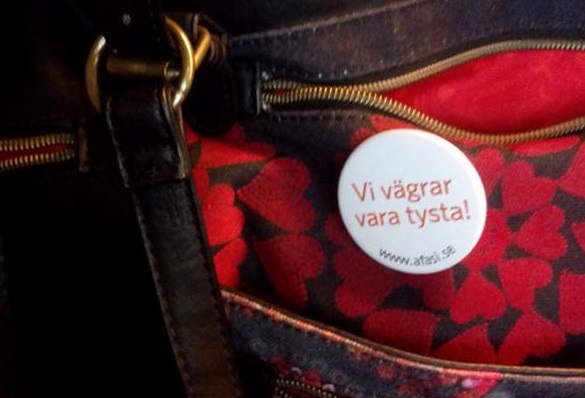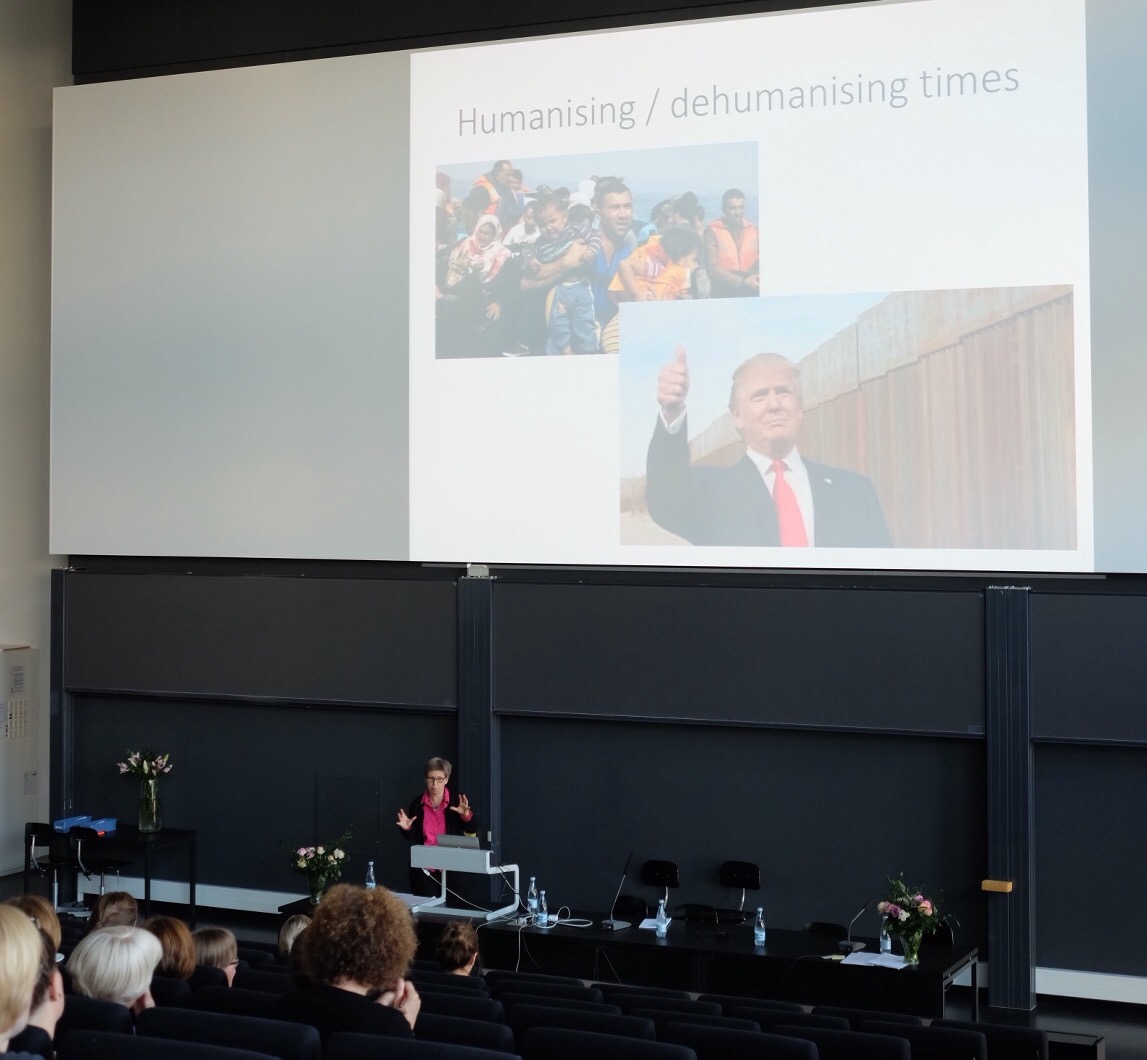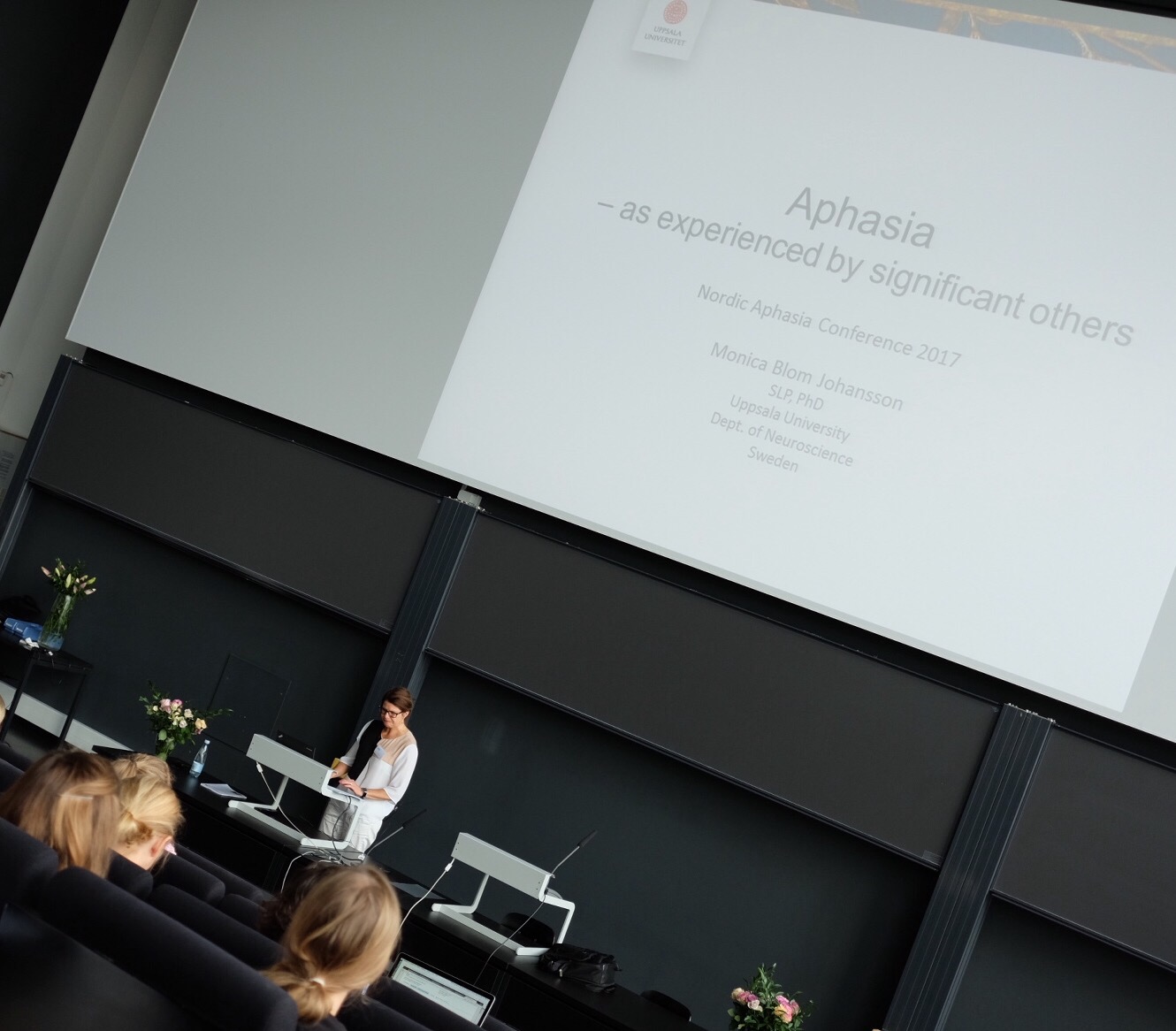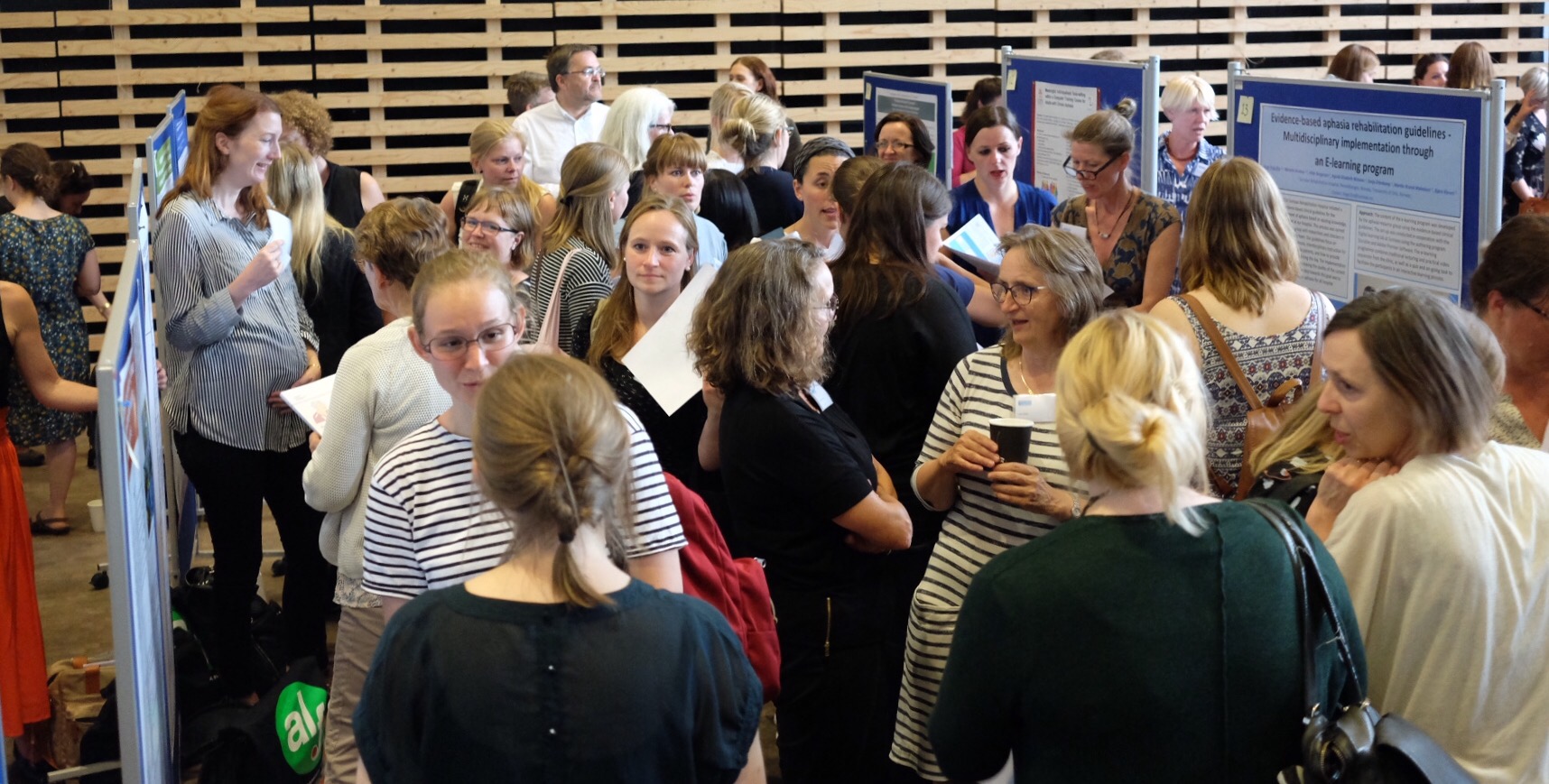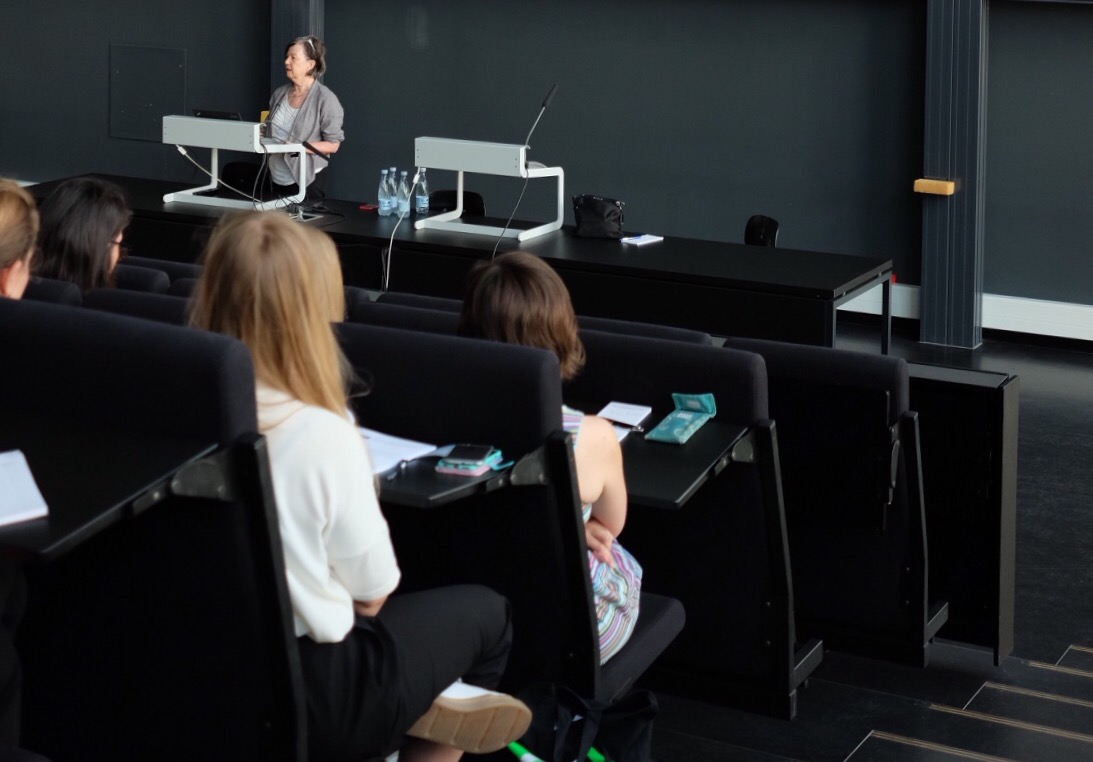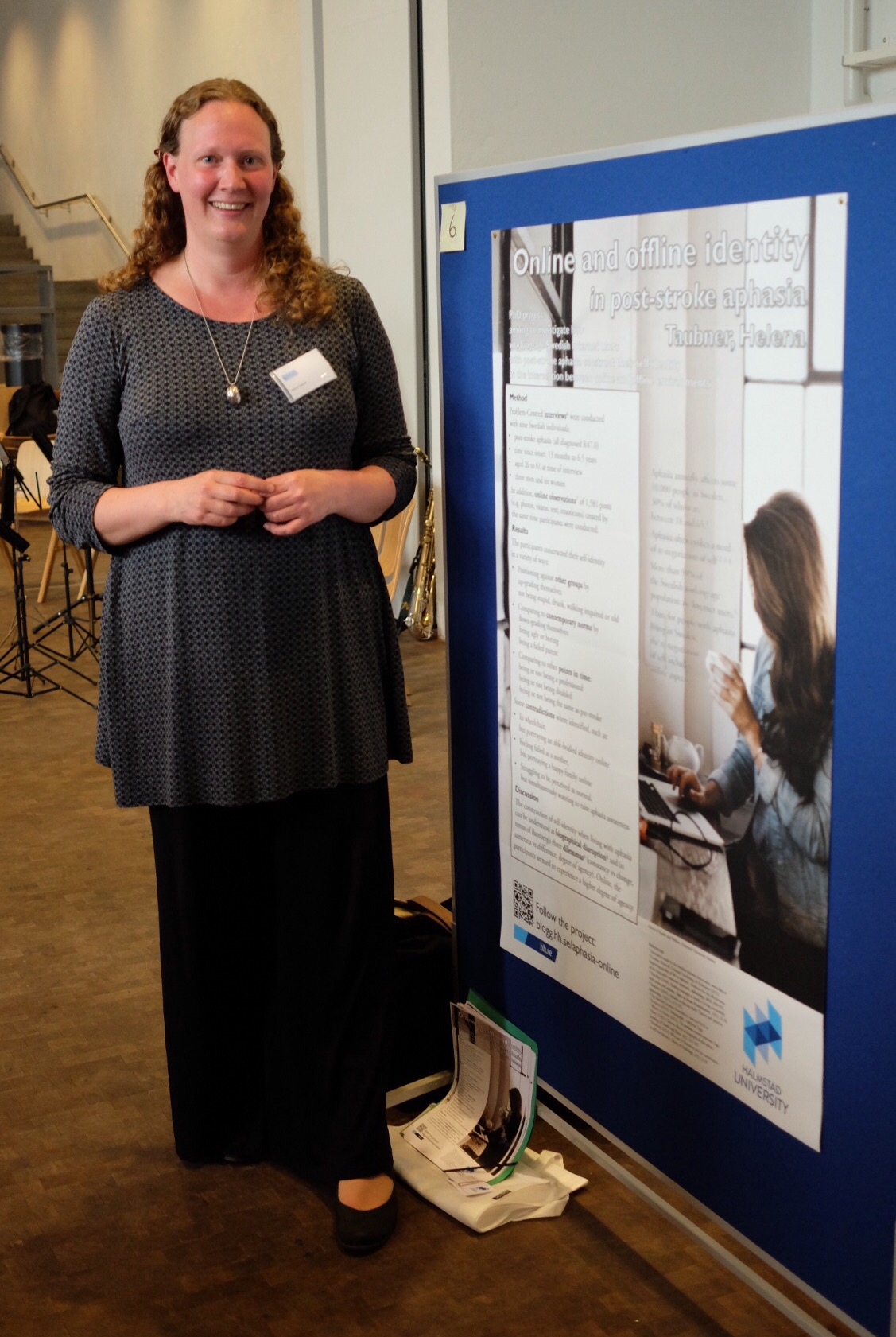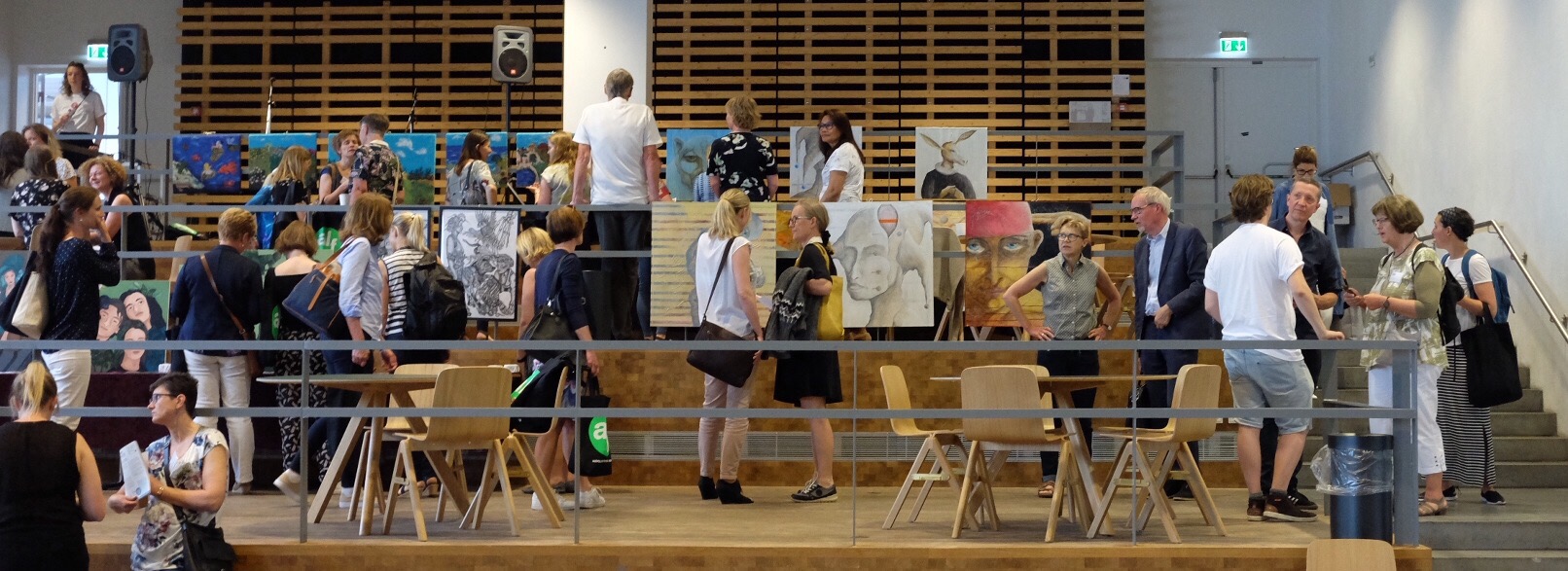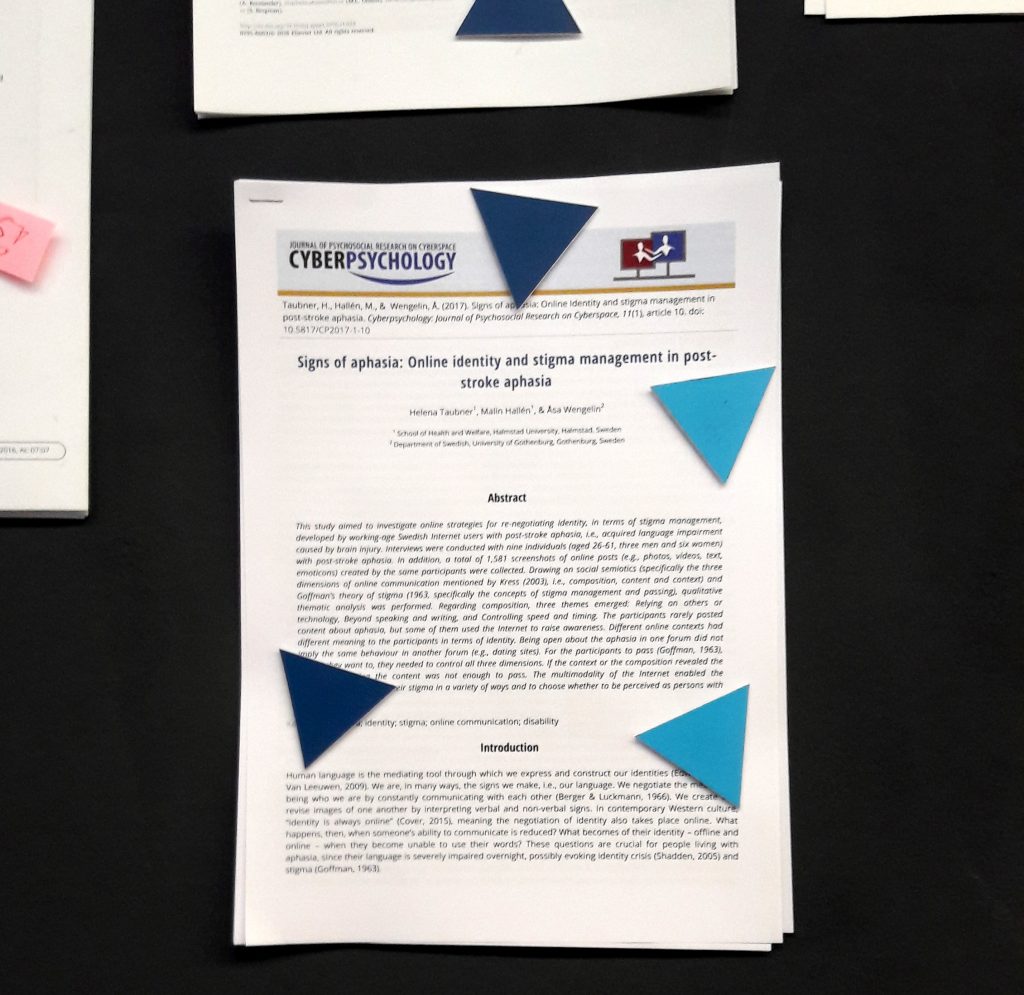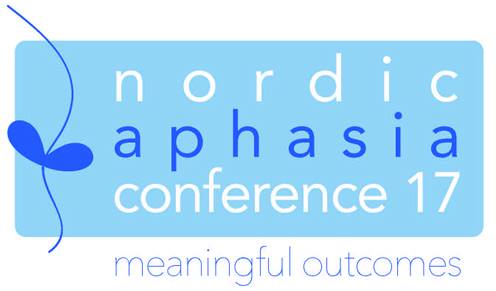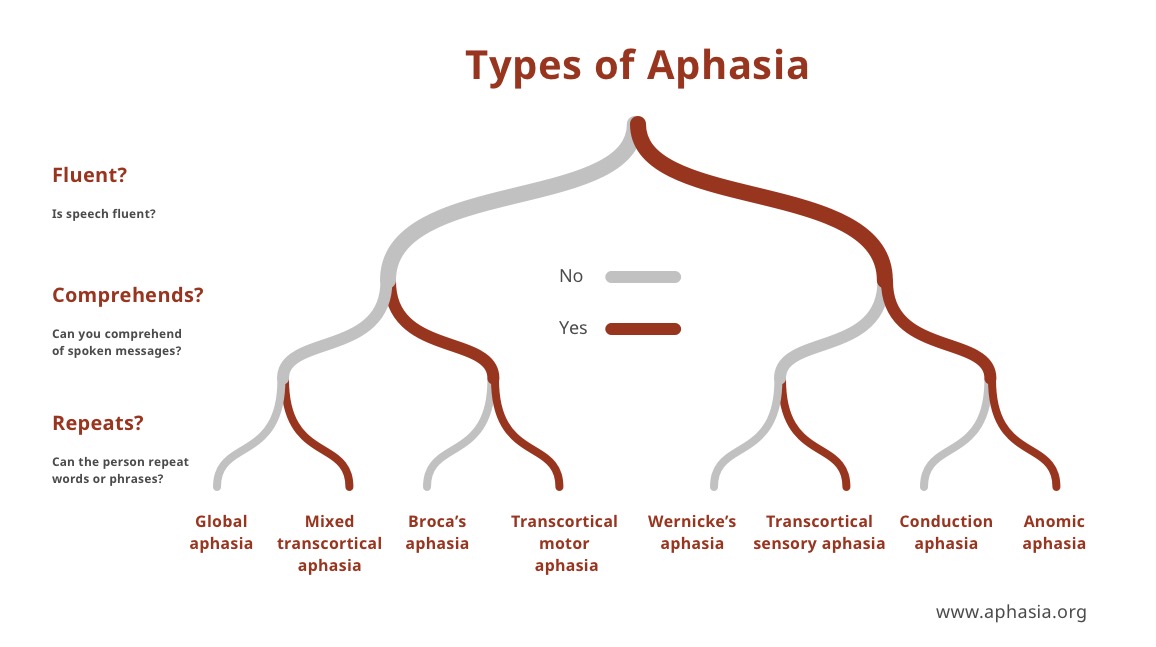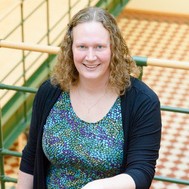
Vårt språk är centralt för våra identiteter. Vi blir dem vi är genom att kommunicera. Mycket av kommunikationen i den västerländska kulturen sker på internet, men trots det finns det nästan ingen forskning som kombinerar alla tre fälten afasi, identitet och internet. Studier om afasi och internet handlar istället ofta om rehabilitering [2, 3, 4, 5, 6, 7], möjligheten att hitta information om afasi [8] eller hur tekniken kan förbättras för personer som lever med afasi [9, 10].
Syftet med den här studien [1] var att undersöka hur nätanvändande personer i yrkesverksam ålder som lever med afasi efter stroke hanterar sin identitet när de kommunicerar på internet.
Som teori användes Goffmans stigmateori [12] som handlar om hur man hanterar att man uppfattas som annorlunda. För att istället uppfattas som normal kan man vilja dölja vissa egenskaper, och det kallar Goffman för att man försöker ”passera”.
Dessutom användes socio-semiotik [11] som bland annat handlar om att kommunikation sker på tre olika nivåer [13]: komposition (d.v.s. form, som till exempel stavning och grammatik), innehåll (vad man berättar) och kontext (i vilket sammanhang kommunikationen sker).
Metod
Nio personer som levde med afasi efter stroke ingick i studien. De var mellan 26 och 61 år gamla. Sex av dem var kvinnor och tre män. De studerades genom intervjuer [14] och observationer på internet [15]. Intervjuerna var mellan 1 och 3 timmar långa.
Observationerna på nätet skedde retroaktivt, d.v.s. från intervjudatumet och bakåt i tiden. Totalt analyserades 1581 inlägg från Facebook, Instagram, bloggar och websajter.
Analysen byggde på tre frågor:
- Finns det synliga tecken på att deltagarna har afasi eller på att de försöker ”passera” i deras kommunikation på nätet?
- Om det är så, syns afasin då i kommunikationens komposition, innehåll eller kontext?
- Finns det skillnader mellan vad deltagarna säger i intervjuerna och hur de kommunicerar på nätet?
Resultat
Resultatet visade framför allt att deltagarna gjorde på olika sätt, men också att det var olika mellan olika nätforum. Att man kommunicerar på ett sätt på Facebook betyder inte att man gör likadant på till exempel en dejtingsajt.
När det gällde kommunikationens komposition hittades tre teman:
- Att förlita sig på teknik eller andra personer – deltagarna tog hjälp av andra personer eller av tekniska hjälpmedel för att kommunicera
- Bortom tal och skrift – deltagarna hade fördel av att man kan använda många olika sätt att kommunicera på nätet (som t.ex. med bilder, filmer eller gilla-knappen)
- Att kontrollera tajming och hastighet – det var viktigt för deltagarna att ha kontroll över hastigheten när de kommunicerade och de valde helst sätt som inte krävde så hög hastighet
Det var inte så vanligt att deltagarna postade innehåll om afasi, men några av dem använde internet för att sprida information och öka kunskapen om afasi. Att en person gjorde på ett sätt (till exempel för att försöka passera) i en typ av kontext innebar inte att hen gjorde samma sak i ett annat forum.
De tre nivåerna (komposition, innehåll och kontext) var inte oberoende av varandra. Om en person skulle vilja ”passera”, måste hen kontrollera nivåerna i en specifik ordning, nämligen först kontexten, sedan kompositionen och sist innehållet.
——————————————-
Fotnot
Denna text är en kortfattad svensk sammanfattning av artikeln Signs of Aphasia – Online Identity and Stigma Management in Post-Stroke Aphasia [1], som är en del av Helena Taubners avhandlingsprojekt om afasi.
——————————————-
Källor
- Taubner, H., M. Hallén, and Å. Wengelin, Signs of Aphasia – Online Identity and Stigma Management in Post-Stroke Aphasia. Cyberpsychology: Journal of Psychosocial Research on Cyberspace, 2017. 11(1): p. article 10.
- Yasuda, K., et al., Effectiveness of a vocabulary data file, encyclopaedia, and Internet homepages in a conversation‐support system for people with moderate‐to‐severe aphasia. Aphasiology, 2007. 21(9): p. 867-882.
- Behrns, I., L. Hartelius, and Å. Wengelin, Aphasia and computerised writing aid supported treatment. Aphasiology, 2009. 23(10): p. 1276-1294.
- Furnas, D.W. and L.A. Edmonds, The effect of computerised Verb Network Strengthening Treatment on lexical retrieval in aphasia. Aphasiology, 2014. 28(4): p. 401-420.
- Sjöqvist Nätterlund, B., A new life with aphasia: everyday activities and social support. Scandinavian Journal of Occupational Therapy, 2010. 17(2): p. 117-129.
- Mortley, J., J. Wade, and P. Enderby, Superhighway to promoting a client‐therapist partnership? Using the Internet to deliver word‐retrieval computer therapy, monitored remotely with minimal speech and language therapy input. Aphasiology, 2004. 18(3): p. 193-211.
- Hall, N., M. Boisvert, and R. Steele, Telepractice in the assessment and treatment of individuals with aphasia: a systematic review. International journal of telerehabilitation, 2013. 5(1): p. 27-38.
- Kerr, J., K. Hilari, and L. Litosseliti, Information needs after stroke: What to include and how to structure it on a website. A qualitative study using focus groups and card sorting. Aphasiology, 2010. 24(10): p. 1170-1196.
- Ghidella, C., et al., Aphasia websites: An examination of their quality and communicative accessibility. Aphasiology, 2005. 19(12): p. 1134-1146.
- Menger, F., J. Morris, and C. Salis, Aphasia in an Internet age: wider perspectives on digital inclusion. Aphasiology, 2016. 30(2-3): p. 112-132.
- Hodge, R. and G. Kress, Social semiotics. 1988, Cambridge: Polity Press.
- Goffman, E., Stigma – notes on the management of spoiled identity. 1963, London: Penguin Books Ltd.
- Kress, G.R., Literacy in the new media age. 2003, London: Routledge.
- Witzel, A. and H. Reiter, The problem-centred interview. 2012, London: SAGE.
- Kozinets, R.V., Netnography: redefined (2nd ed.) 2015, London: SAGE.
